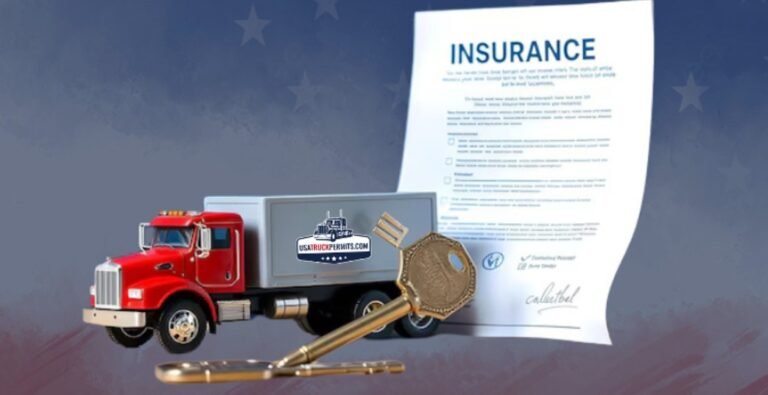Basics facts of car Insurance that every driver must know

Basics facts of car Insurance that every driver must know
Every driver’s obligation consists in part of car insurance. Making wise judgements in either a first-time car owner’s situation or one with years of driving expertise depends on knowing the fundamentals of auto insurance. It ensures financial coverage in the event of an accident, theft, or other unforeseen event. Still, automobile insurance can be a complicated subject with numerous terms and choices to negotiate. This post will break down the principles every driver should understand to help you make the best decision on your vehicle insurance.
There are many different kinds of car insurance policies, and depending on your demand, you could find it challenging to select the correct coverage. It’s about finding the coverage that fits your driving style, car, and way of life, not only about selecting the least expensive choice. This article will provide all the information you need to make sure you are driving with the correct insurance in place, from knowing the various forms of coverage to recognizing the elements influencing your prices.
What is car insurance?
Regular premiums paid in return for coverage in case of an accident, damage, or theft define your relationship with an insurance company. Covering the expenses resulting from accidents, property damage, or medical bills helps automobile insurance primarily safeguard your financial situation. If you didn’t have insurance, you would have to cover all costs yourself, which could lead to financial ruin. Apart from a legal need in most areas, automobile insurance is also a fundamental component of ethical driving. Should you be caught driving without insurance, you could be subject to large penalties, legal action, and perhaps license loss.
Types of Car Insurance Coverage
Selecting a car insurance policy will expose several kinds of coverage options. Liability insurance, typically the least required by law, compensates others for damages in the event that you are at fault in an accident. Two main elements are property damage liability, which covers repairs to other people’s property, including their car, and bodily injury responsibility, which pays for the medical bills of individuals hurt in the accident. Liability insurance guarantees that, should an accident occur, you are not personally accountable for costly damages.
Though liability insurance is crucial, it does not cover damage to your own car. That’s where thorough coverage and collision play a role. Regardless of responsibility, collision coverage helps cover repairs to your own car should you be in an accident. On the other hand, comprehensive coverage targets losses that arise from non-collision events such as theft, fire, vandalism, or natural disasters like floods or hail. Usually combined together, these two forms of coverage are particularly crucial for drivers of more valuable or younger vehicles.
Personal Injury Protection (PIP)
Many drivers also decide to add another type of coverage—personal injury protection (PIP)—to their policy. It pays your passengers’ and your own medical bills, independent of who started the collision. If you lack health insurance or if your present policy has large deductibles, this kind of coverage is especially helpful. For drivers looking for complete protection, PIP is also a beneficial choice since it can pay lost wages should an accident cause injuries that prevent you from working.
Underinsured/Uninsured Motorist Coverage
Uninsured/Underinsured Motorist coverage is another important factor to take into account since it protects you if an accident is brought on by a motorist lacking appropriate insurance or completely uninsured. This coverage ensures that your medical costs, vehicle repairs, and other expenses won’t be your responsibility due to someone else’s negligence. Uninsured drivers often cause incidents, so it’s advisable to have this coverage, especially in areas where they are more prevalent.
Factors Affecting Your Car Insurance Premium
Several factors influence your vehicle insurance rates, which vary based on your unique circumstances. For instance, your age greatly influences the price you will spend. Younger drivers, particularly those under 25, are typically considered high-risk and may face higher premiums due to their lack of driving experience. Your rates may drop, though, as you age and acquire more driving experience—especially if you keep a spotless driving record. Having a history of traffic tickets or accidents can also raise your premiums; a spotless driving record will help to lower them.
Your charges vary based on where you live. Usually, with more traffic accidents, theft, and vandalism in urban locations, premiums there are higher. Conversely, because of the reduced incidence of accidents and theft, rural locations often have lower premiums. The type of car you drive also significantly influences your insurance prices. Your rates will probably be higher if you drive a luxury automobile, a high-performance sports car, a car with pricey parts, or another vehicle with high value. Conversely, vehicles with strong safety ratings or lower theft rates often have reduced premiums.
The role Your Credit Score
In addition to these factors, your credit score may also impact your insurance rate, particularly in countries where insurance companies use credit ratings to assess risk. Higher credit score people are less likely to file claims; hence, insurance companies could provide them with reduced prices. Drivers with low credit scores, on the other hand, might pay more. Regularly reviewing your credit report and, if necessary, raising your credit score can not only help you obtain better insurance rates, but also provide other financial advantages in life.
How to Compare Car Insurance Quotes
To guarantee you are getting the greatest value while looking for vehicle insurance, compare many quotes from several companies. Although the first quotation you come across may be appealing, spending some time assessing several possibilities will help you save money over time. While many comparison websites enable you to swiftly compare quotes from various insurance providers, it’s crucial to carefully read the fine print to understand the inclusions and exclusions. Although cheap insurance could appear like a great bargain, they might not provide the degree of security you require; therefore, do not compromise coverage merely to save a few dollars.
Understanding Your Deductible
Another approach to controlling your rates is to select the correct deductible. The amount you pay out of pocket prior to your insurance beginning to pay the bills is known as a deductible. Choosing a higher deductible typically lowers your premium, but it also means you will have to pay more upfront in the event of a claim. You should strike a balance between a deductible you can pay and one that helps drive down your total cost. While a higher deductible may result in monthly savings, it will increase your out-of-pocket expenses before your insurance coverage kicks in.
Review your insurance policy frequently.
Remember that auto insurance is not a universal solution. Your insurance coverage should alter with time, as your needs will. For example, if you purchase a new car, you may need to adjust your coverage to adequately accommodate it. You might want to review your coverage if you relocate or if your driving style changes. Always stay informed about various coverage options and take proactive steps to adjust your insurance when your circumstances change.
Conclusion
Driving sensibly depends critically on car insurance. It shields you against the financial fallout from road hazards, including theft and accidents. You can ensure sufficient coverage in every circumstance by understanding the fundamentals, comparing quotations, and choosing the correct coverage. Review your policy, assess your needs, and make informed decisions at all times. Don’t forget this important part of your driving experience since the appropriate auto insurance can give security and peace of mind.






